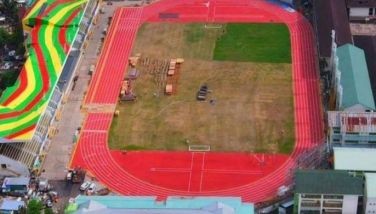New technology in ortho surgery eyed to boost medical tourism
August 31, 2006 | 12:00am
A state-of-the-art approach in orthopaedic surgery, particularly in total knee and hip replacement, will soon be introduced in Cebu and is seen to boost medical tourism, according to a health expert.
Orthopaedic surgeon Dr. Christopher Mow of Stanford University Hospital said that this new approach, a computer assisted procedure, has already been used abroad for years.
Mow said that the new development, which he calls the computer navigation system, offer better outcomes for patients and more accuracy for doctors when doing an orthopaedic surgery.
During a total knee replacement for example, plastic and metal parts are used to replace injured or damaged parts of the knee. Until now, a doctor had to rely on his or her experience to remove the bone, replace it with implanted material and align the plastic or metal material with the bone.
Mow said that since each patient's knee is different, this procedure can prove to be challenging. "This technology allows the surgeon to customize the total knee replacement for each patient. The computer allows us to place implants with a much higher degree of accuracy, this will improve accuracy and consistency. The patients will have better long term results," he said.
St. Lukes Medical Center is among the first hospitals in the country to use a computer-assisted navigation system in orthopedic joint replacement surgery. The image-guided navigation system is similar to the location and directional tracking systems used for cars and ships today - it is, in effect, a Global Positioning System or GPS, for the surgeon. Informative positioning calculations are displayed on a graphically intuitive screen, which dynamically changes with the individual patient's anatomy.
This technology superimposes the position of the instruments as they are used in surgery onto images of the anatomy displayed on a monitor. Much as the driver of a car uses the GPS to find the way on the road, the surgeon depends on these images to confirm the position of their instruments in relation to the patient's anatomy.
The image-guided surgery (IGS) camera works like the satellite that detects signals from cars, boats, and other vehicles equipped with special tracking devices. As the surgeon moves an instrument within the patient's joint, the IGS camera, like the GPS satellite, calculates its position, and then transfers that data to a computer in the operating room. The computer then shows the direction and location of the instrument. - Jasmin R. Uy/QSB
Mow said that the new development, which he calls the computer navigation system, offer better outcomes for patients and more accuracy for doctors when doing an orthopaedic surgery.
During a total knee replacement for example, plastic and metal parts are used to replace injured or damaged parts of the knee. Until now, a doctor had to rely on his or her experience to remove the bone, replace it with implanted material and align the plastic or metal material with the bone.
Mow said that since each patient's knee is different, this procedure can prove to be challenging. "This technology allows the surgeon to customize the total knee replacement for each patient. The computer allows us to place implants with a much higher degree of accuracy, this will improve accuracy and consistency. The patients will have better long term results," he said.
St. Lukes Medical Center is among the first hospitals in the country to use a computer-assisted navigation system in orthopedic joint replacement surgery. The image-guided navigation system is similar to the location and directional tracking systems used for cars and ships today - it is, in effect, a Global Positioning System or GPS, for the surgeon. Informative positioning calculations are displayed on a graphically intuitive screen, which dynamically changes with the individual patient's anatomy.
This technology superimposes the position of the instruments as they are used in surgery onto images of the anatomy displayed on a monitor. Much as the driver of a car uses the GPS to find the way on the road, the surgeon depends on these images to confirm the position of their instruments in relation to the patient's anatomy.
The image-guided surgery (IGS) camera works like the satellite that detects signals from cars, boats, and other vehicles equipped with special tracking devices. As the surgeon moves an instrument within the patient's joint, the IGS camera, like the GPS satellite, calculates its position, and then transfers that data to a computer in the operating room. The computer then shows the direction and location of the instrument. - Jasmin R. Uy/QSB
BrandSpace Articles
<
>
- Latest
- Trending
Trending
Latest
Trending
Latest
Recommended

















